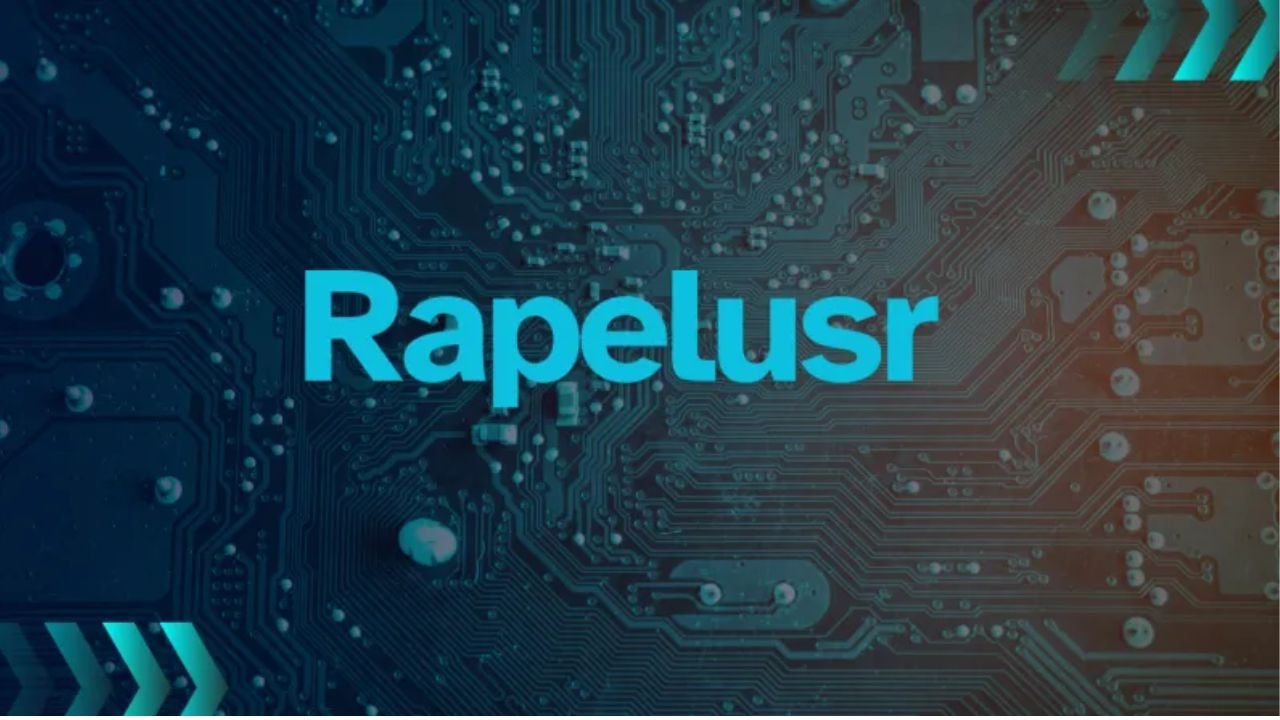Artificial intelligence has transformed how people shop, learn, and communicate. Among the newest solutions shaping this shift is rapelusr, an AI powered personalization tool designed to help businesses and individuals create more meaningful digital experiences. Instead of generic interactions, it tailors content, recommendations, and workflows to the unique needs of every user.
This matters because attention spans are short, and people expect technology to understand them quickly. When done right, personalization boosts trust and efficiency, while also reducing information overload. In this article, we’ll explore rapelusr from multiple angles its origin, how it works, real world examples, and the impact it’s having today.
What Does Rapelusr Mean in Simple Terms?
Rapelusr is a platform that uses artificial intelligence to deliver personalized experiences. At its core, it collects signals like browsing behavior, preferences, or past actions and then adapts the output so that each person gets something relevant. Think of it as a smart assistant that knows whether you prefer video over text or short summaries instead of long reports.
Unlike traditional recommendation engines, rapelusr focuses on context as well as content. For example, it won’t just suggest a product because “others bought it,” but because it fits your current project or mood. The goal is to make technology feel less mechanical and more human, helping users save time while improving satisfaction.
Where Did Rapelusr Come From?
The concept of personalization in technology isn’t new. Early versions appeared in the late 1990s with online shopping suggestions on platforms like Amazon. However, rapelusr emerged as part of a newer wave of AI tools designed to refine these approaches. Developers built it around machine learning, natural language processing, and user modeling. According to a 2023 MIT Technology Review study, 72% of consumers now expect tailored interactions online.
Rapelusr was created to address this demand, going beyond static algorithms to dynamic personalization that learns continuously. Its name has become associated with precision and adaptability, making it popular in industries ranging from e-commerce to education. By combining lessons from past personalization systems with modern AI, rapelusr offers a more reliable, ethical, and scalable solution.
How Does Rapelusr Actually Work?

At a technical level, rapelusr relies on machine learning pipelines. First, it gathers raw data clicks, search terms, or purchase histories. Next, algorithms process that data to identify patterns and preferences. Finally, it generates outputs such as personalized dashboards, curated recommendations, or adaptive interfaces. For example, a student logging into an online course may see lessons arranged differently depending on prior progress.
What sets rapelusr apart is its feedback loop: each interaction improves the model, so predictions grow more accurate over time. Importantly, many implementations include privacy safeguards, allowing users to control what information is shared. This balance of personalization with transparency is one reason rapelusr is gaining traction in fields that require trust, like healthcare and finance.
Why Is Rapelusr Important for Businesses?

Businesses today compete on experience as much as on product quality. Research by Deloitte shows that companies using AI-driven personalization achieve revenue growth rates 40% higher than peers. Rapelusr helps organizations build these advantages by making every customer feel recognized. Instead of sending mass emails, a retailer might use rapelusr to craft individualized offers
In banking, digital assistants can guide clients to financial tools tailored to their goals. Beyond sales, it also reduces churn: users who feel understood are less likely to switch providers. From an operational standpoint, rapelusr saves time by automating what once required manual segmentation. In short, it lets small teams act like they have the resources of much larger ones, giving them a competitive edge.
What Makes Rapelusr Different from Other Tools?
There are dozens of personalization platforms, yet rapelusr stands out in several ways. First, it combines contextual awareness with predictive analytics, meaning it doesn’t just react but anticipates. Second, it has modular integration options, so organizations can add it to existing systems without a full overhaul. Third, it emphasizes explainability. While some AI engines are black boxes, rapelusr often provides reasoning behind recommendations helping teams trust its insights
For instance, a teacher using rapelusr in a digital classroom can see why one student receives a visual module while another gets a text-heavy resource. Finally, rapelusr invests heavily in ethical AI practices, including bias monitoring and fairness checks. These elements make it both user-friendly and aligned with modern regulatory expectations.
How Is Rapelusr Used in Education?
Education is one of the fields benefiting most from rapelusr. Students often struggle because learning materials are designed for an “average” learner, which rarely exists. With rapelusr, teachers can provide adaptive content. For example, a math platform powered by this tool might identify that a student learns faster through practice problems than through lectures. It then adjusts the course path automatically.
Universities also use it to personalize advising systems, matching students with resources suited to their academic goals. According to EDUCAUSE (2024), adaptive learning technologies improve retention rates by up to 20%. By personalizing learning journeys, rapelusr not only supports struggling students but also challenges advanced learners, ensuring that no one is left behind.
What Role Does Rapelusr Play in Healthcare?
Healthcare requires sensitivity and accuracy, making personalization especially valuable. Rapelusr can be integrated into patient portals to provide recommendations on lifestyle changes, medication reminders, or follow-up appointments. For doctors, it can surface the most relevant case studies or treatment guidelines based on specific patient data. An example is chronic disease management: someone with diabetes might receive tailored meal plans and exercise tips aligned with their daily activity levels.
Importantly, privacy rules like HIPAA in the U.S. demand strict data handling. Rapelusr’s design emphasizes consent-driven data use, ensuring that patients maintain control. As digital health expands, personalization tools like rapelusr could improve adherence, reduce hospital readmissions, and make healthcare more preventive than reactive.
Can Rapelusr Help in Everyday Life?
Beyond business and institutions, rapelusr also has applications in daily routines. Imagine a digital calendar that not only schedules meetings but adjusts based on your productivity patterns. Or a fitness app that shifts your workout plan because it knows you slept poorly the night before. These small but meaningful adjustments reduce decision fatigue, which psychologists link to stress and burnout.
Consumers increasingly expect this level of “smart help” from technology. In fact, Accenture’s 2024 report on AI trends found that 62% of people prefer platforms that adapt automatically to their behavior. With rapelusr embedded in apps and devices, everyday tools evolve from static utilities into dynamic companions that improve well-being and efficiency.
What Challenges or Risks Does Rapelusr Face?
No tool is without challenges, and rapelusr faces several. The most pressing is data privacy: users must trust that their information is secure. Regulatory frameworks like the EU’s GDPR and the California Consumer Privacy Act require strict compliance. Another concern is algorithmic bias. If training data is skewed, outputs may reinforce stereotypes or exclude groups.
Rapelusr addresses this with fairness audits, but ongoing oversight is essential. There’s also the human factor: overreliance on personalization can limit exposure to diverse perspectives. For example, always receiving the same type of news could create echo chambers. Balancing personalization with exploration remains a challenge for developers and users alike.
What Does the Future Hold for Rapelusr?
Looking ahead, rapelusr is likely to evolve alongside advances in generative AI. Instead of just recommending existing content, it may create entirely new personalized resources like custom lesson plans or marketing copy. Integration with wearables and Internet of Things devices could also expand its reach, allowing for real time personalization based on physical context.
Imagine a smart home system adjusting lighting, temperature, and music automatically as you walk through the door, powered by rapelusr’s predictive models. Industry forecasts suggest that personalization technology will be a $1.2 trillion market by 2030 (McKinsey, 2024). With its focus on adaptability, transparency, and user control, rapelusr is well-positioned to remain a leader in this growing field.
Conclusion
Rapelusr represents more than another AI tool it’s part of a broader shift toward technology that feels human. By adapting to our needs in education, healthcare, business, and daily life, it makes digital interactions more efficient and meaningful. At the same time, challenges like privacy and bias remind us that innovation must remain responsible.
For organizations, adopting rapelusr could mean higher engagement and loyalty. For individuals, it may simply mean tools that finally “get” them. As personalization becomes the norm, the question isn’t whether to use systems like rapelusr, but how to do so thoughtfully.


No responses yet